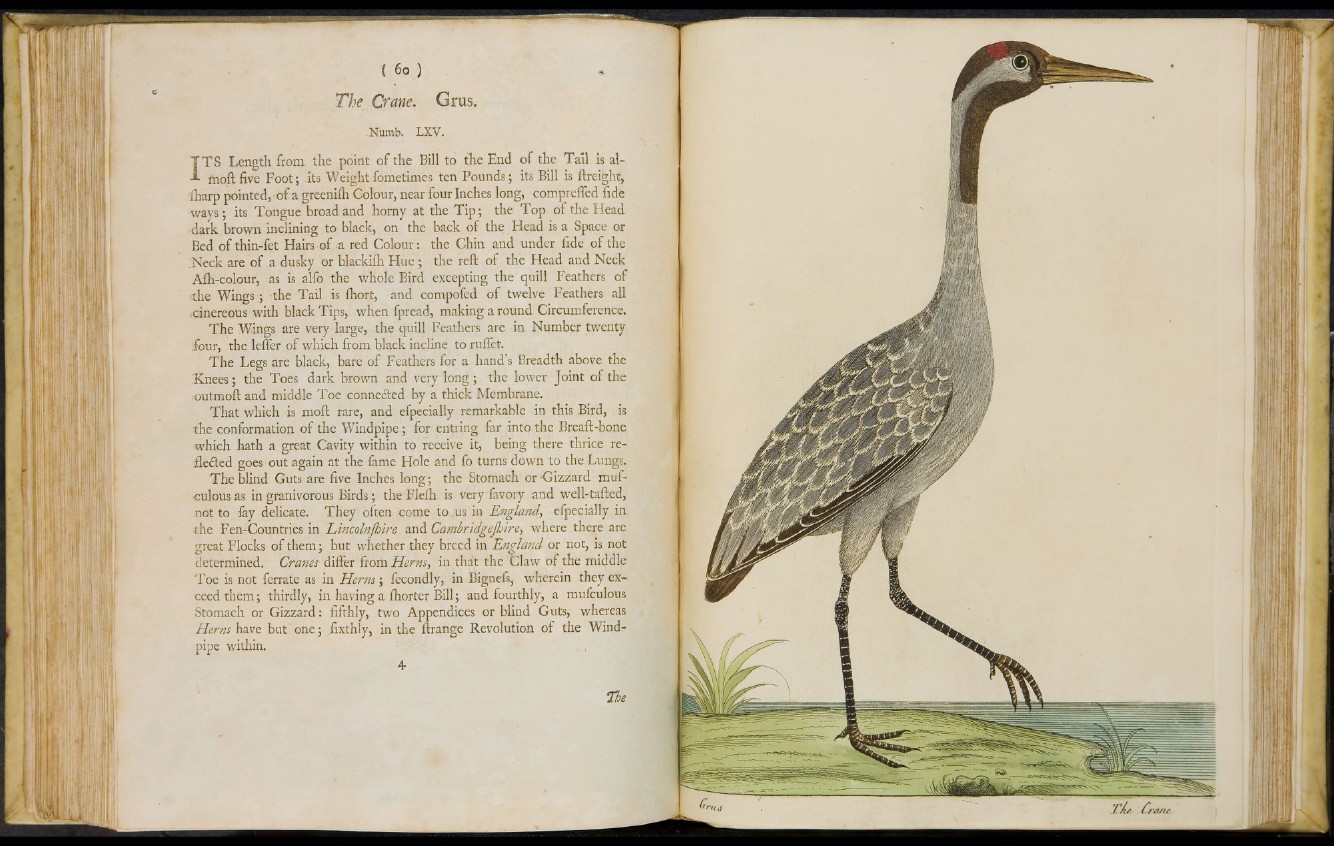
The Crane. Gras.
-Numb. LXV.
T T S Length from the point of the Bill to the End of the Tail is al-
fnoftfive Foot; its Weight fometimes ten Pounds; its Bill is ftreight,
fharp pointed, ■ of a greeniih Colour, near four Inches long, compreifed fide
-ways; its Tongue broad and horny at the Tip; the Top of the Head
dark brown inclining to black, on the back of the Head is a Space or
Bed of thin-fet Hairs of a red Colour: the Chin and under fide of the
:Neck are of a dusky or blackiih Hue ; the reft of the Head and Neck
Aih-colour, as is alfo the whole Bird excepting the quill Feathers of
=.the Wings; the Tail is ihort, and compofed of twelve Feathers all
«cinereous with black Tips, when fpread, making a round Circumference.
The Wings are very large, the quill Feathers are in Number twenty
dour, the lefler of which from black incline to ruffet.
The Legs are black, bare of Feathers for a hand’s Breadth above the
Knees; the Toes dark brown and very long; the lower Joint of the
outmoft and middle Toe connected by a thick Membrane.
That which is moft rare, and efpecially remarkable in this Bird, is
the conformation of the Windpipe; for entring far into the Breaft-bone
which hath a great Cavity within to receive it, being there thrice re-
fledted goes out again at the fame Hole and fo turns down to the Lungs.
The blind Guts are five Inches long; the Stomach or -Gizzard muf-
culous as in granivorous Birds; the Flefh is very favory and well-tafted,
not to fay delicate. They often come to .us in England, efpecially in
the Fen-Countries in Lincolnjhire and Cambridgeflsire, where there are
great Flocks of them; but whether they breed in England or not, is not
determined. Cranes differ from Herns, in that the Claw of the middle
Toe is not ferrate as in Herns; fecondly, in Bignefs, wherein they exceed
them; thirdly, in having a fhorter Bill; and fourthly, a mufculous
Stomach or Gizzard: fifthly, two Appendices or blind Guts, whereas
Herns have but one; fixthly, in the ftrange Revolution of the Windpipe
within.
T i ra/ic